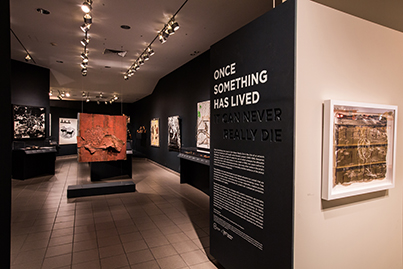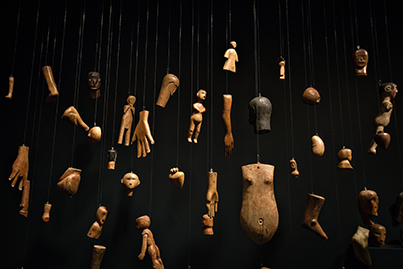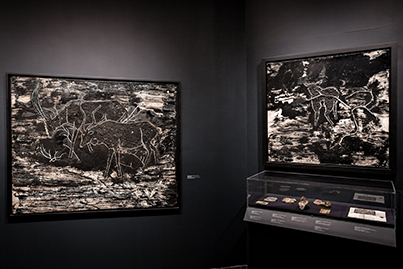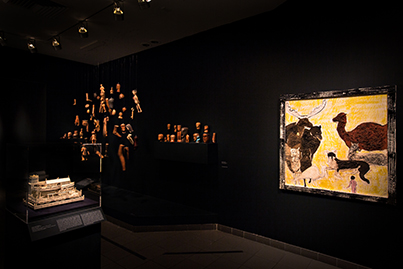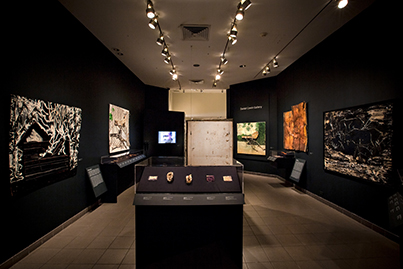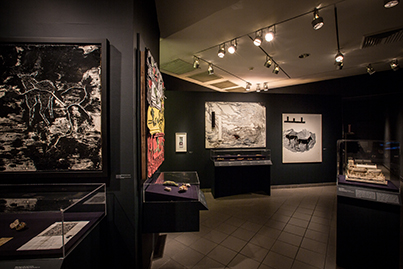Ronald Lockett (1965–1998, Bessemer, Alabama)
Untitled


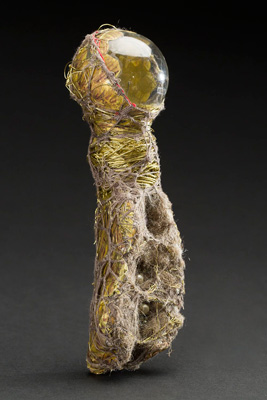

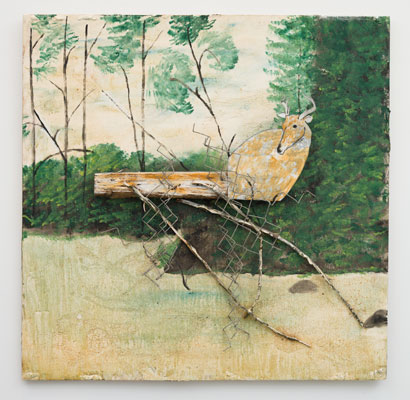
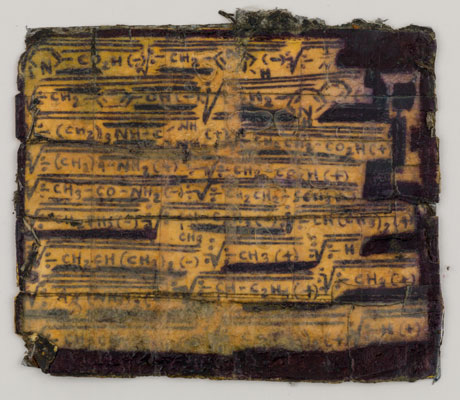
Once Something Has Lived It Can Never Really Die takes its title from a large-scale assemblage created by African American self-taught artist Ronald Lockett (1965–1998) in 1996, two years before he died of AIDS-related pneumonia. On the rusted-tin surface of the artwork emerges the silhouette of a stag—a depiction of Lockett’s avatar, which he used repeatedly in his art. Like many other works in his oeuvre, the piece reflects the artist’s reckoning with his own mortality and endurance in the face of brutal entrapment.
In the exhibition, ten of Lockett’s artworks—representing different phases of his career—are paired with more than eighty small and portable works made by both known and unidentified artists from various eras and geographical regions, all of whom are situated outside the art mainstream. It includes eighteenth- and nineteenth-century Native American effigies, Brazilian wood ex-votos, sculptures by Sandra Sheehy (b. 1965), and drawings by Melvin Way (b. 1954). Each production relates to the most pervasive and essential themes in Lockett’s art: mortality, eschatology, and vulnerability. Produced for their protective qualities and invested with powers, the creations played a role in daily rituals. They allude to recurring human conditions—fear, loss, illness, and survival—and mark transitions between, and connections with, the ongoing cycles of life.
Curator
Valérie Rousseau, Curator, Self-Taught Art and Art Brut
Once Something Has Lived It Can Never Really Die is a complement presentation to Fever Within: The Art of Ronald Lockett, a traveling exhibition organized by the Ackland Art Museum that will be on view at the same time.
The museum would like to thank Gordon W. Bailey, Edward V. Blanchard, Andrew Castrucci, Cavin-Morris Gallery, Beate Echols and Michael Shub, Harriet Finkelstein, Jacqueline Loewe Fowler, Audrey Heckler, Jeffrey Myers, Richard Rosenthal, Sandra Sheehy, Ron and June Shelp, and Melvin Way for their loans and support for the exhibition.
Images credits (from left): Ronald Lockett (1965–1998, Bessemer, Alabama), Untitled, Bessemer, Alabama, c. 1988, paint and wire mesh on plywood, 43 x 42 1/2 x 2″, American Folk Art Museum, gift of Ron and June Shelp, 2013.5.9. Photo by Adam Reich. © 2016 Estate of Ronald Lockett / Artists Rights Society (ARS), New York
Siberian Yupik, Polar bear (effigy suspended to a rafter in order to show reverence to the animal and ensure a successful hunt), Kukulik site, St. Lawrence Island, Alaska, AD 300–600, walrus ivory, 2 1/8 x 9 x 1 1/2″, collection of Jeffrey Myers. Photo by Adam Reich.
Sandra Sheehy (b. 1965, Norfolk, England), Untitled, England, 2015, beads, thread, wire, paper, fabric, and a lightbulb, 6 1/2 x 2 x 2″, courtesy the artist and Cavin-Morris Gallery. Photo courtesy Cavin-Morris Gallery.
Ronald Lockett (1965–1998, Bessemer, Alabama), Vanishing Breed, Bessemer, Alabama, c. 1993, tin, paint, nails, and colored pencil on wood, 46 x 45 1/2 x 7 1/4″, Gordon W. Bailey Collection. Photo by Adam Reich. © 2016 Estate of Ronald Lockett / Artists Rights Society (ARS), New York
Ronald Lockett (1965–1998, Bessemer, Alabama), Untitled (Traps), Bessemer, Alabama, c. 1989, cut tin, wood, branches, nails, chain-link fencing, and paint on plywood, 48 x 48 x 3″, American Folk Art Museum, gift of Calynne and Lou Hill, 2009.5.3. © 2016 Estate of Ronald Lockett / Artists Rights Society (ARS), New York
Melvin Way (b. 1954, South Carolina), Untitled, New York, c. 2003, ballpoint pen on paper, with Scotch tape, 3 1/2 x 4″, American Folk Art Museum, museum purchase with the generous support of Andrew Castrucci, 2016.19.1. Photo by Adam Reich.
Installation photos by Olya Vysotskaya.
The exhibition is supported in part by Joyce Berger Cowin, the David Davies and Jack Weeden Fund for Exhibitions, the Ford Foundation, the Leir Charitable Foundations, public funds from the New York City Department of Cultural Affairs in partnership with the City Council, and the New York State Council on the Arts with the support of Governor Andrew Cuomo and the New York State Legislature. The wall colors are provided by Farrow & Ball.
The exhibition is supported in part by Joyce Berger Cowin, the David Davies and Jack Weeden Fund for Exhibitions, the Ford Foundation, the Leir Charitable Foundations, public funds from the New York City Department of Cultural Affairs in partnership with the City Council, and the New York State Council on the Arts with the support of Governor Andrew Cuomo and the New York State Legislature. The wall colors are provided by Farrow & Ball.
